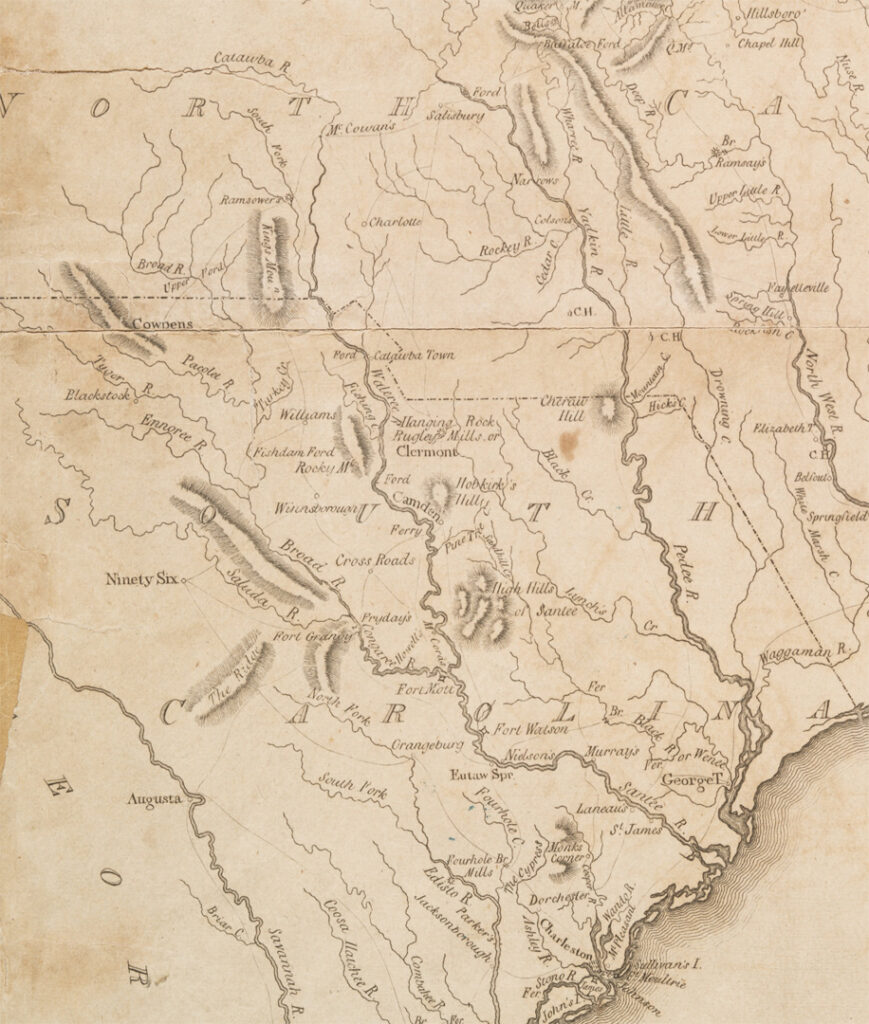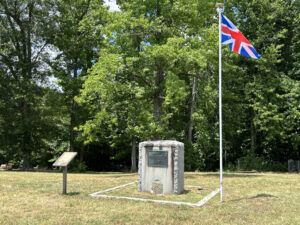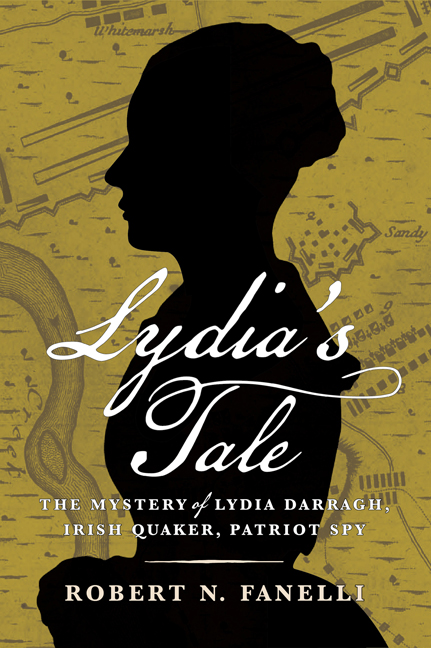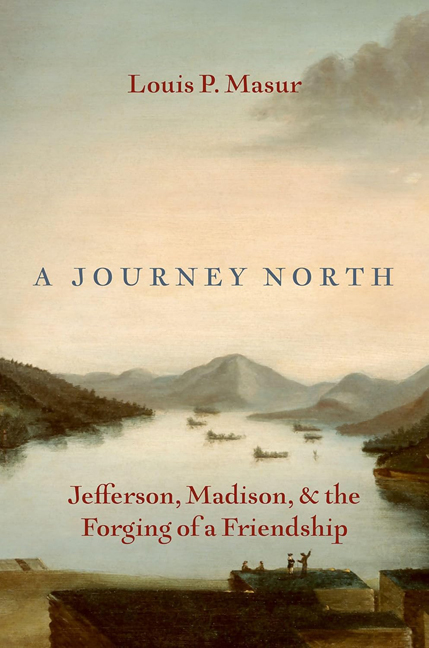Following the surrender of the major coastal capital of Charlestown, South Carolina (present-day Charleston) to the joint army-navy expeditionary force led by Maj. Gen. Sir Henry Clinton and Vice Admiral Mariot Arbuthnot in May 1780, British land forces began to fan out across the Carolina interior to reestablish Royal control. When Clinton returned to New York in early June, command in the south transferred to Lt. Gen, Charles, Earl Cornwallis.
As late May gave way to early summer, British strategy was, first, to mop up any remaining Continental or militia forces outside of Charlestown. Second, to establish contact with population centers thought to be especially sympathetic to the British. Although it was not clear where and to what extent such sympathy existed, areas around Orangeburg, South Carolina and Cross Creek (now Fayetteville, North Carolina) were thought to be broadly loyal. Third, to establish garrison posts commanded by regular British officers at key junctions to subdue and overawe the local population, especially in predominantly Whig areas. Cornwallis intended to use these garrisons as rallying points where Loyalist militias could be organized, armed and trained by British officers.
The British began to establish forward posts in an arc across South Carolina. To the west, near the Indian frontier, he sent forces to take the existing fort of Ninety Six. In the center, a depot was established at the town of Camden, which could be supplied from Charlestown. North of Camden, two camps were set up, one on a high prominence on the Catawba River called Rocky Mount, and, roughly fifteen miles away, another on the Camden Road near Hanging Rock Creek. Finally, to the west, the 71st Regiment of Foot, Fraser’s Highlanders. were sent to the village of Cheraw. The posts were close enough to support one another if attacked, but advanced enough to give warning of any approach by an invading Continental army, which was surely to arrive sometime that summer.

As Cornwallis explained the strategy in a letter to the British Secretary of State for the American Department, he began by “fixing posts of troops from the Pedee to the Savannah Rivers, to awe the disaffected and encourage the loyal inhabitants.” In addition, Cornwallis “took every measure in my power to raise some Provincial corps and to establish a militia” for the defense and for the internal government of South Carolina.[1]
The keystone of this strategy was the raising of a large Loyalist army among the citizens of South Carolina. Once this was done, this local force could maintain order in the Carolinas, freeing the British army to advance north into North Carolina and, ultimately, Virginia. This presupposed, of course, that such a body of motivated and reliable soldiers existed in the Carolinas, ready to be animated. Was this true?
No one knew for sure, but London decision makers had long harbored this belief (or illusion). In this they were constantly reinforced by many former Royal governors, such as North Carolina’s Josiah Martin, who endlessly lobbied them that the bulk of the population was loyal, and only required a spark to light the counter-revolution. This was the “Loyalist Gamble,” that is, a bet that if properly motivated and energized, and more importantly armed and trained by British regulars, a pro-British local militia could be activated in the South. Whether this strategy was grounded in reality or wishful thinking remained to be seen.
As Cornwallis consolidated established his bases across South Carolina in early June 1780, he sent emissaries to establish direct communication with “our friends in North Carolina.” It was imperative that these Loyalist leaders not rise up prematurely, before they could be supported by the arrival of British regulars. This would not happen until late summer at the earliest. If they did, and were defeated early in the campaign, it might entirely deflate and derail the Loyalist project upon which British strategy for the Carolinas depended. For the moment, Cornwallis advised the Loyalist leaders to gather their crops, make preparations to rise when called upon, but otherwise take no action.
Keeping the Carolina Loyalists quiet, however, was not going to be easy. Since the departure of British Governors and the capture of power by the Whigs in the spring of 1775, they had been on the defensive. “Unwilling to forego their allegiance to the Crown, many were imprisoned, brought to the whipping post, banished, subjected to confiscation, and executed for treason,” writes one British historian.[2] In the lawless environment that followed, Loyalist homes were burned by revolutionary irregulars, sometimes acting as armed gangs, who “unrestrained by concepts of civilized behavior took advantage of the disordered ties and practiced all sorts of enormities ranging from plunder and destruction of property to severe chastisement, murder, and rape.”[3] Now, the tide had turned. With the British ascendant in the summer of 1780, revenge was foremost on their minds.
In early June, two North Carolina Loyalist leaders, Lt. Col. John Moore and Maj. Nicholas Welch, both from the foothill area in Tryon County due west of Mecklenburg, arrived back home. Both had been serving with the British army that spring, and were acting under Cornwallis’s authority. Returning to his family’s farm in early summer dressed in a tattered British regimental uniform and bearing an officer’s sword, Moore brought first-hand accounts of the fall of Charlestown. Welch, also finely dressed in a red Regimental uniform, began freely handing out guinea coins “to allure some, whilst he endeavored to intimidate others by an account of the success of the British army in all the operation of the South, and the total inability of the Whigs to make further opposition.”[4]
They issued a summons to those loyal to the Crown to meet and discuss their strategy at a well known assembly place, near a mill on the west side of the Catawba River. Moore’s family lived about six miles from the mill, owned by Jacob Ramsour (sometimes spelled Ramseur). Moore’s message was that they were to bring in their harvest, gather weapons and ammunition, and make themselves ready to fight when the British army moved north into their area, possibly later that summer.
Over the first few weeks of June, more and more volunteers arrived at Ramsour’s Mill. By mid-June, there were nearly 1,200 men, many of them boys or teenagers. Moore and Welch had not brought supplies and weapons with them, so each man was supposed to have armed himself. As such, of the thousand plus men, probably a third of them had no weapons at all.
Meanwhile, Whig partisans in the area had heard of Moore and Welch’s unwanted arrival and the mustering of Loyalists, and were determined to break it up. Around Charlotte, Brig. Gen. Griffith Rutherford had mustered several hundred local volunteers in late May, following Buford’s defeat and Lord Rawdon’s expedition into the Waxhaw area along the North/South Carolina border. Maj. William R. Davie, of renown in the Waxhaws, had also gathered sixty-five mounted dragoons and infantry not far from Ramsour’s. Other local leaders from the area had similar bands, and each were eager to fight.

Rutherford resolved to attack Moore’s Loyalists at the first opportunity, and to this end marched on June 18 from Charlotte Town to the Tuckasegee Ford on the Catawba River, just twelve miles away. Rutherford ordered Col. Francis Locke to gather forces to supplement him, and once combined, they would attack the Loyalist encampment. Other local leaders and their volunteer forces, led by Joseph McDowell, David Wilson and others, grew Locke’s militia band to 400 men. On the evening of June 19, this large body of inexperienced, largely untrained civilians was camped at Mountain Creek, sixteen miles from Ramsour’s. After a council of war, they agreed to attack the next morning. Meanwhile, Rutherford had sent a messenger instructing Locke to have his forces link up with him for a combined attack. Due to some mistake or miscommunication, Locke never got the message. While Rutherford waited for Locke to arrive, Locke, unaware that Rutherford was near, prepared to attack the Loyalists on his own at sunrise on June 20. His men broke camp the night before, rode through the night, and were only a mile from the Loyalist camp at day break.
The Loyalists were deployed on top of a ridgeline clear of underbrush with scattered large oaks, 300 yards east of Ramsour’s Mill. The right of their camp lay on the downward slope near the Tuckaseegee Road, roughly six hundred yards from their encampment. From the crest of the hill, they had an excellent field of fire down the slope, with only a few trees interspersed. To their rear was a large pond on which Ramsour’s mill stood. At the base of the hill was a small glen, fringed with bushes near the road. A fence ran from the glen to the right of their line. A low fog shrouded the road and the hill that morning.
Moore had placed a dozen picket guards on the approaching road, but otherwise had not organized a defensive perimeter. The companies of approaching Whig horsemen, therefore, arrived completely unexpectedly through the morning fog before the sentinels had any idea what was happening. Surprised but recognizing enemy cavalry, they fired at the dragoons, and fled up the hill towards their camp.
The cavalry charged them, firing on the awakening men in camp, who scrambled from their tents, searching for their weapons and clothes. At first Moore’s men were in confusion, but they recovered from their initial panic and poured fire back at the Whig horsemen.
The Whig dragoons, although having the element of surprise, were still greatly outnumbered, and as Moore’s men began firing in earnest, they retreated in disorder back down the hill. As they reached the base of the hill, Locke’s infantrymen, who had not been able to keep up with the charge, were only then arriving, and the two forces met in some disorder. The dragoons rode through and past them to reassemble, while the infantry faced uphill to fire at the Loyalists, taking what cover they could find.
Seeing the Whig cavalry retreat, the Loyalists crept slowly down the hill and proceeded to fire upon the disorganized scrum at the base of the slope from behind trees, wagons and baggage. The Loyalists’ musketry fire, remembered Davie, “was well directed,” and “the action became general.”[5] In turn, the Whigs formed a firing line facing the camp from the fence, on their left, across the base of the hill, to the right. It was a fight “without order or system,” recalled Whig soldier Joseph Graham, with round after round of musket shots thundering on the hill side, mixing smoke and shouts with the humid mid-summer morning fog.[6]
Few of the officers or men on either side that morning had fired their weapon at another man before. Many were very young, just teenagers, and probably a quarter of them, at least on the Loyalist side, were unarmed. Neither side wore uniforms, and thus would have been nearly indistinguishable from one another (as a slight mark of differentiation, the Whigs wore a piece of white paper in the front of their hats – which made them excellent targets for the Loyalist marksmen – while the Loyalists wore green sprigs).
For half an hour, the two sides exchanged gunfire. The lines crept forwards or back, depending on who was receiving the worst of the fire. At one point, the Whigs were pushed back into the bushes near the glade, as the Tory “fire became so destructive.” Then a group of Whigs led by Capt. Joseph Hardin moved forward on the Loyalist’s left flank along the fence line, and began a “galling fire on the right flank of the Tories.”[7] Another group extended the line on the Tory left, and now the Whig firing line, properly formed and extended, threatened to turn both their flanks. Fired on from three sides, the Loyalists were gradually pushed back towards the crest of the hill.
Crowded in together on the exposed hilltop in close quarters, neighbors and fellow churchgoers fired at close range at one another or fought hand to hand, swinging musket butts as weapons. The melee was general. “The lines was crossed and neither side couldn’t tell one another apart,” stated one witness.[8] As Graham remembered, “In this battle, neighbors, near relations and personal friends fought against each other; and as the smoke would from time to time blow off, they could recognize each other.”[9] In one episode, two old friends, a Whig named Billy and a Tory “Dutchman,” argued while swinging their gun butts at one another.
The Dutchman cried out, ‘Oh, stop, stop! I is not going to stand still and be killed like a damned fool neder [neither],’ and raised the butt of his gun and made a blow at Billy’s head, which he missed, and one of Billy’s comrades, whose piece was loaded, clapped his muzzle under the Dutchman’s arm and the poor fellow fell dead.[10]
The sun continued to rise over the scrum of men fighting hand to hand on the exposed hilltop. By now, the Loyalists were being fired upon on three sides, both their flanks having been turned. Capt. Nicholas Warlick of the Loyalists tried to rally his men on the hilltop; those without weapons were told to retreat down the other side of the hill, and take cover across the mill pond. Seeing these men pull back may have triggered a broader collapse of their lines, as men panicked and ran. One Whig recalled:
The fightin’ went on for near an hour with hundreds of dead on both sides. The Tories had the advantage as they was on the ridgeline and hid by bushes and such. As our infantry got close they began to fight hand to hand with the butts of their guns as they didn’t have no bayonet on ‘em.[11]
When Captain Warlick was shot dead by a sharpshooter, the game was over, and mass panic set in. Running men splashed across the fast running creek. Others tried to swim the mill pond and drowned. The Loyalists
retreated down the ridge toward the mill, exposed to the fire of the centre and of Captain Harden’s company behind the fences. The Whigs pursued until they got entire possession of the ridge, when they perceived to their astonishment that the Tories had collected in force on the other side of the creek, beyond the mill.[12]

It made no difference. The Whigs were now too tired and disorganized to mount a further attack against the confused mass of men across the creek. Locke himself could only muster less than a hundred of his original 400 men, and thus feared a counter-attack should the Loyalists regroup. He sent messengers to Rutherford to reinforce him. But the Loyalists were broken as well. Moore proposed a ceasefire to gather the wounded, but it was really just a ruse to delay a further attack on his unorganized and defeated men in the woods across the creek. While Locke considered a response, Moore instructed the remaining Loyalists to flee in any way they could. Rutherford was now en route to the battlefield, but by the time he arrived a few hours later, the Tories were gone. It was over.
At least seventy men lay dead scattered along the slope of the ridge. A great number of officers on either side were killed, including Warlick, as was his brother, Philip. The two of them lie there to this day, on the hill summit, beneath a stone and a British flag. As the men on each side had no uniforms, it was not known which were Tory or Whig, but the proportion of fatalities was probably equal. Many were buried in a common grave at the summit. About 100 men on both sides were wounded. Fifty Tories were taken prisoner, and all of their weapons, provisions and horses seized. The evening of the following day, relatives of the soldiers on either side searched the hillsides looking to retrieve the bodies of their slain kin.
In the days and hours after the battle, Davie’s cavalry was sent in pursuit of the scattered and retreating Tories. Many Tory militia leaders surrendered in the following days and, as Davie put it, “that district of country lying between the [Catawba] river, the mountains and [South Carolina] was entirely cleared of the Enemy.”[13]
The battle of Ramsour’s Mill was a shambles for the Loyalist cause, and smashed the promise of British friends in North Carolina, even before it could get started. Writing to the Secretary of State at the end of August, after which he had more time to reflect on the debacle in Tryon County, Cornwallis decried the Loyalists “having assembled without concert, plan or proper leaders . . . [and thus] were surprised and totally routed by the Son of Genl. Rutherford. Many of them fled into this Province [South Carolina], where their reports tended much to terrify our friends and encourage our enemies.”[14]
Although the overall casualties were relatively insignificant, the moral effect was devastating. Rawdon was told that “the loyalists were completely scattered . . . this advantage on the part of the rebels may shake the fidelity of our new-formed militia on the borders unless the troops are present to awe them to their duty.”[15]
The loyalist leaders, particularly Moore, took the blame for acting against Cornwallis’s express instructions. “The folly and imprudence of our friends is unpardonable,” wrote Cornwallis, continuing,
I desire you will inform Lt. Colonel Hamilton that I wish him to come to town immediately, and would have him acquaint his officers before he leaves the regiment that, if I hear of any more instances of irregularity about recruiting or disobedience of orders, that I will put the regiment into garrison on Sullivan’s Island. [16]
Moore was threatened with court martial. British Lt. Col. George Turnbull, commanding Rocky Mount, agreed, blaming “that weak silly man Moore, who led a parcel of those poor innocent devils of North Carolina into a scrap.”[17]
Ramsour’s Mill also set in motion a series of chain reactions that would lead to an unravelling of British strategy in the Carolinas. First, the perception that restoration of British rule was inevitable, following the fall of Charlestown and the massacre of Buford’s detachment in late May in the Waxhaws, was checked. Second, the horses, muskets and other supplies that had been gathered to launch the loyalist project in North Carolina were lost to the Whigs. And of course, the loss of manpower both in terms of killed and wounded, as well as those who would now sit the campaign out, was considerable. Consider if Patrick Ferguson had had an additional thousand or more men with him at the Battle of Kings Mountain, which would occur just three and a half months later. The nascent loyalist army could also have been useful in fighting William R. Davie and Thomas Sumter’s militias in the Charlotte and Waxhaws area, with implications for the later battles of Hanging Rock and Rocky Mount. But all that was in the future.
More importantly, just a few months into the southern campaign, Cornwallis’s Loyalist gamble seems to have lost. Through ill discipline, poor leadership and the fortunes of war, the project of creating a motivated and reliable Loyalist militia had fallen at the first hurdle. In retrospect, of course, the Loyalist gamble was, in truth, an illusion, one that would take a few more months to fully extinguish itself. As the British military historian John Fortescue put it in his History of the British Army: “Of all foundations on which to build the conduct of a campaign [the Loyalist gamble was] the loosest, the most treacherous, the fullest of peril and delusion; yet . . . there was none [that was] more in favour with British ministers, with the inevitable consequence of failure and disaster.”[18] Its disintegration began on the slopes of a small hill in Tryon County.
[1] “Cornwallis to Germain,” August 20, 1780, The Cornwallis Papers, ed. Ian Saberton (Uckfield, UK: Naval & Military Press Ltd., 2010), 2:7-8.
[2] Ian Saberton, The American Revolutionary War in the South (Tolworth, UK: Grosvenor House Pub. Ltd., 2018), 153.
[3] Ibid.
[4] William A. Graham, General Joseph Graham and His Papers (Raleigh, NC: Edwards & Broughton, 1904), 215.
[5] Blackwell Robinson (ed.), The Revolutionary War Sketches of William R. Davie (Raleigh, NC: NCDCR, 1976), 7.
[6] Graham, General Joseph Graham, 220-221.
[7] Ibid., 221.
[8] Pension statement of Samuel Patton of Rowan County, NC, in William Thomas Sherman, Calendar and Record of the Revolutionary War in the South: 1780-1781 (Seattle, WA: Gun Jones Publishing, 2011), 184-5.
[9] Graham, General Joseph Graham, 225.
[10] Ibid., 222.
[11] Patton in Sherman, Calendar, 184-5.
[12] Patrick O’Kelley, Nothing But Blood and Slaughter (Harnett, NC: Blue House Tavern Press, 2004), 186.
[13] William R. Davie, in Sherman, Calendar, 184.
[14] Ibid.
[15] Saberton, Cornwallis Papers, 1:182.
[16] Ibid., 1:185.
[17] Ibid., 1:363-4.
[18] J.W. Fortescue, A History of the British Army (Uckfield, UK: Naval & Military Press Ltd.), 3:168.








3 Comments
Great read. Best summary I have read on the battle. You might want to fix the grammar on this, “As Cornwallis consolidated established his bases across South Carolina in early June 1780”.
When I was researching my article on the South Carolina soldier demographics I came across two sources that Lt. Col. Moore was hung in 1781. The pension application of John Copland (S30966) and memoir of Gen. Richard Winn have roughly similar general accounts of Moore’s hanging. There is a footnote source that also indicates that another source exists in the London Political Magazine of April 1783 which I have been able to track down.
It would seem like other sources could exist, particularly among Sumter’s correspondence but have ventured too far in that direction.
I would think this could be a good research topic for those with the resources and time to explore.
Thank you for this article; it is the best and most detailed description of the battle that I have read. One of my ancestors fought at the Battle of Ramsour’s Mill, and family lore was always that “it was a brouhaha between neighbours.” Not far from the truth, then! But now I can say that it was also a case of men with more enthusiasm than strategic intelligence, on both sides.